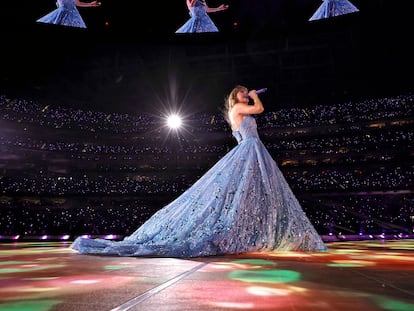Robbie Robertson, the musician who wanted to make movies
A contemporary of Bob Dylan, the guitarist was the driving force behind The Band, a group that returned rock to its rural roots
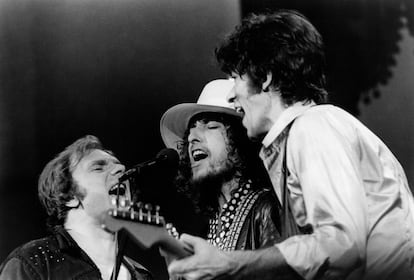
Robbie Robertson, who died in Los Angeles Wednesday at the age of 80, lived a full life under the mark of simulation. The son of a Canadian-Indian, he was a teenager when he learned that his real father had been a Jewish hustler who died under mysterious circumstances on an Ontario highway. It was the 1950s and Robertson was swept up in the rock and roll tsunami, achieving remarkable eloquence with the electric guitar. So much so that he was signed by Ronnie Hawkins, a vigorous American rockabilly singer. He was still a minor but Hawkins’ bait proved irresistible: “You won’t make a lot of money, but you’re going to get more action than Frank Sinatra.”
Accompanying the exuberant Hawkins, Robbie and his friends kicked around the B-series of the American circuit, toughening themselves up for all kinds of audiences. By 1963, they had abandoned their mentor and expanded their repertoire to the emerging soul genre. They accompanied bluesman John Paul Hammond in the studio and recorded a few singles on their own, which largely went unnoticed. Until they were, quite literally, touched by the divine hand.
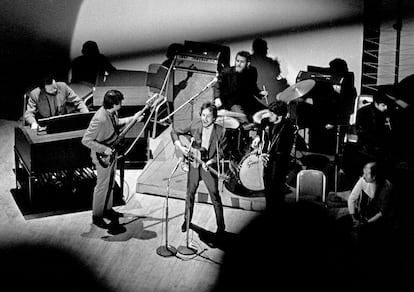
In 1965, Bob Dylan was God: he’d broken the conventions of pop lyrics and wanted a return to the noisy rock of his beginnings. He chose Robbie’s group, Levon and the Hawks, as his backing band: they had mastered many styles and didn’t need much in the way of rehearsal But neither Dylan nor his musicians were prepared for what awaited them on their international tours: they were booed by a purist public, who preferred Dylan with an acoustic guitar and harmonica and reacted with demonic automatism to the electric part of the concerts. Today it seems a quaint reaction, but it was unpleasant enough for the leader of The Hawks, drummer Levon Helm, to quit music.
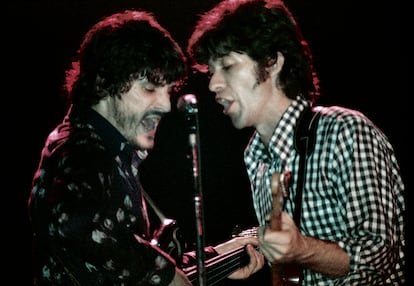
The ordeal over, they retreated to Woodstock, a lost community in the mountains of New York that attracted artists from different disciplines. There, Dylan was determined to change his life but he still had the musical bug: he regularly went to Big Pink, the modest house where his musicians lived. In the basement, with primitive equipment, they recorded ancestral songs and new Dylanesque themes. They would be baptized as The Basement Tapes and were bootlegged before being legally released.
At the same time, they were harvesting material of their own. It might seem an imposture: they immersed themselves in the history and culture of the United States, although they were all Canadian (with the exception of Levon Helm, who returned to the fold after a stint on an oil rig). It was a versatile project, with three top-notch singers (Levon, Richard Manuel and Rick Danko) and two exceptional instrumentalists, keyboardist Garth Hudson and Robertson himself on his piercing guitar.
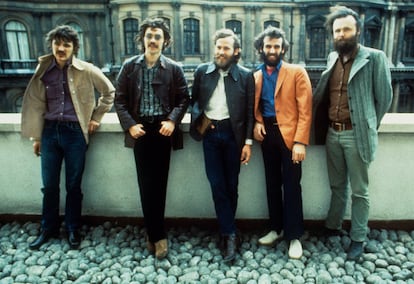
The Band functioned as a purgative for the excesses of the psychedelic era, with special impact on Eric Clapton and other British stars, who were not particularly attentive to the nuances of songs like The Night They Drove Old Dixie Down, which evoked the misfortunes of a southerner during the Civil War without mentioning slavery. With Robertson’s inexhaustible songwriting inspiration, The Band were prolific for 10 years, during which they time they recorded Planet Waves and toured with Dylan in 1974.
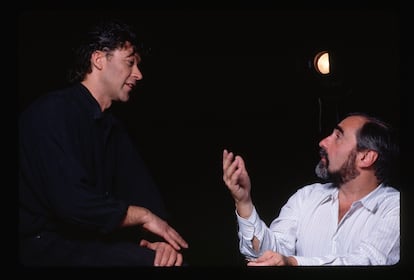
Despite the contributions of professionals such as Allen Toussaint, the group was losing momentum, due to the alcohol and drug excesses of several of its members. Robertson proposed a big farewell, with a concert attended by the great and the good in San Francisco, baptized as The Last Waltz and immortalized by Martin Scorsese. It was supposed to be a mere parenthesis, with The Band reappearing in the future.
This was not the case, at least with the presence of Robbie Robertson. Fascinated by cinema, the guitarist tried his hand as an actor (Carny, 1980) and ended up becoming Scorsese’s right-hand man in musical matters, from Raging Bull to the director’s latest, Killers of the Flower Moon. He made no effort to reunite The Band. In fact, he began to release solo albums, such as Robbie Robertson (1987) or Storyville (1991). His former bandmates, in need of the money, got together in 1993 to tour and record three albums that, alas, went unnoticed.
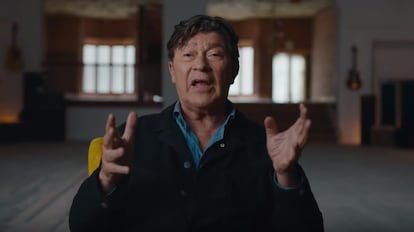
The successive deaths of Richard Manuel, Rick Danko and Levon Helm further muddied the waters. Helm had become mortal enemies with Robertson, revealing that he had been acquiring copyrights from his former partners. Perhaps too late, Robbie explained that he was trying to help his ruined friends and see to it that control of The Band’s legacy was not dispersed. He recounted this in a careful autobiography, Testimony and in a bittersweet documentary, Once Were Brothers: Robbie Robertson and The Band. He had fallen under the magnetism of Hollywood, and who could reproach him?
Sign up for our weekly newsletter to get more English-language news coverage from EL PAÍS USA Edition
Tu suscripción se está usando en otro dispositivo
¿Quieres añadir otro usuario a tu suscripción?
Si continúas leyendo en este dispositivo, no se podrá leer en el otro.
FlechaTu suscripción se está usando en otro dispositivo y solo puedes acceder a EL PAÍS desde un dispositivo a la vez.
Si quieres compartir tu cuenta, cambia tu suscripción a la modalidad Premium, así podrás añadir otro usuario. Cada uno accederá con su propia cuenta de email, lo que os permitirá personalizar vuestra experiencia en EL PAÍS.
¿Tienes una suscripción de empresa? Accede aquí para contratar más cuentas.
En el caso de no saber quién está usando tu cuenta, te recomendamos cambiar tu contraseña aquí.
Si decides continuar compartiendo tu cuenta, este mensaje se mostrará en tu dispositivo y en el de la otra persona que está usando tu cuenta de forma indefinida, afectando a tu experiencia de lectura. Puedes consultar aquí los términos y condiciones de la suscripción digital.
More information
Archived In
Últimas noticias
Welcome to the post-religion era: The idea of Christianity as the absolute truth has become obsolete
‘I thought you would like it’: The risky sexual practice popularized by TV shows and TikTok
The digitalization of tourism: ‘They promise experiences and gave us the worst possible one’
Mexican peso defies uncertainty with forecasts of a new period of stability in 2026
Most viewed
- Sinaloa Cartel war is taking its toll on Los Chapitos
- Oona Chaplin: ‘I told James Cameron that I was living in a treehouse and starting a permaculture project with a friend’
- Reinhard Genzel, Nobel laureate in physics: ‘One-minute videos will never give you the truth’
- Why the price of coffee has skyrocketed: from Brazilian plantations to specialty coffee houses
- Silver prices are going crazy: This is what’s fueling the rally

